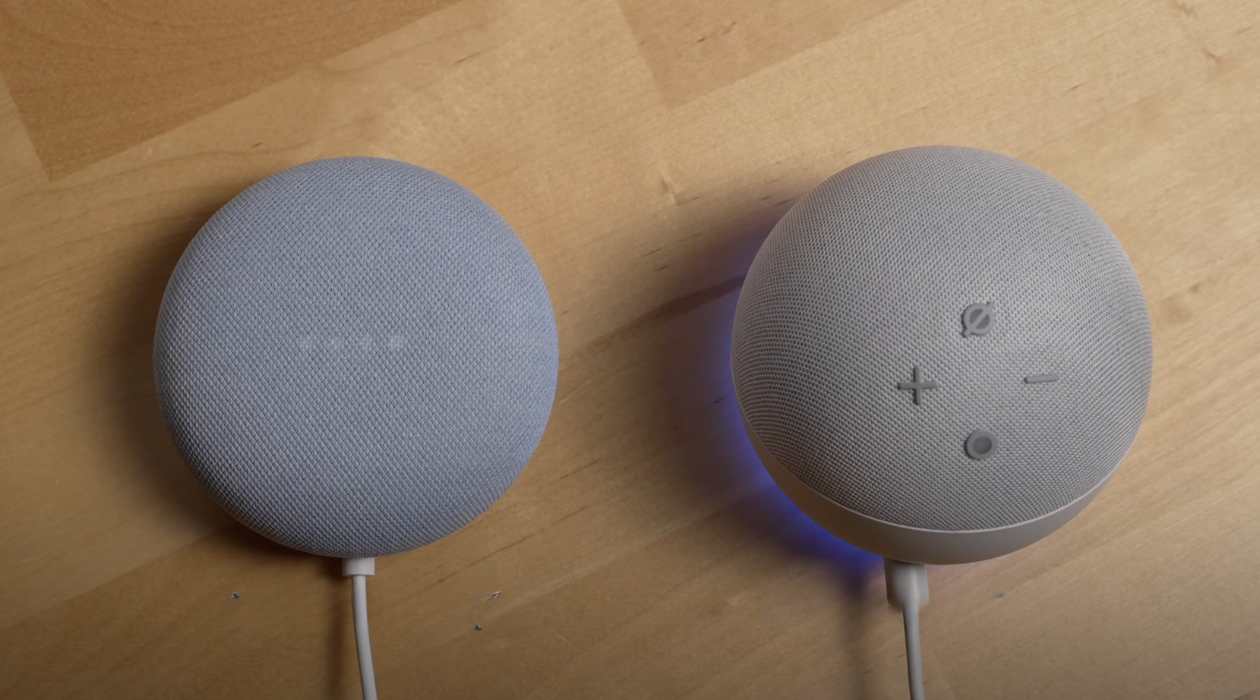Home>Articles>What Is The Difference Between A Juicer And A Blender


Articles
What Is The Difference Between A Juicer And A Blender
Modified: February 26, 2024
Discover the key distinctions between a juicer and a blender. Read our informative articles to understand their unique benefits and how they can enhance your healthy lifestyle.
(Many of the links in this article redirect to a specific reviewed product. Your purchase of these products through affiliate links helps to generate commission for Storables.com, at no extra cost. Learn more)
Introduction
Welcome to the world of kitchen appliances, where you have a wide array of tools at your disposal to create delicious and healthy concoctions. Two popular appliances that often find their way into the modern kitchen are juicers and blenders. While both of these devices are designed to transform fruits and vegetables into scrumptious drinks, there are distinct differences between them. In this article, we will explore the characteristics, functions, and benefits of juicers and blenders, helping you understand which one is best suited to meet your dietary needs and preferences.
Whether you are a health enthusiast, a busy professional, or someone looking to incorporate more nutrients into your diet, understanding the differences between a juicer and a blender is essential. By gaining knowledge about each appliance, you can make an informed decision when it comes to your kitchen investment.
Key Takeaways:
- Juicers extract pure, nutrient-packed juices for quick absorption, while blenders retain fiber and offer versatility for creating a wide range of recipes, catering to diverse dietary needs and culinary preferences.
- When choosing between a juicer and a blender, consider factors such as texture preferences, convenience, budget, and space availability to align with your specific needs and lifestyle, enhancing your culinary experience.
Read more: Juicer vs Blender: What’s The Difference?
Purpose of the Article
The purpose of this article is to provide an in-depth understanding of the distinctions between juicers and blenders. By delving into their functions, types, and benefits, you will be equipped with the information needed to make an educated decision based on your personal preferences and dietary goals.
Key Definitions
Before we dive into the specifics of juicers and blenders, let’s first define them:
- Juicer: A juicer is a kitchen appliance designed to extract the liquid content from fruits and vegetables, separating the juice from the pulp.
- Blender: A blender is a countertop appliance equipped with sharp blades that blend, mix, or puree ingredients into a smooth consistency.
Now that we have a clear picture of what a juicer and a blender are, let’s explore their functions in more detail.
Key Takeaways:
- Juicers extract pure, nutrient-packed juices for quick absorption, while blenders retain fiber and offer versatility for creating a wide range of recipes, catering to diverse dietary needs and culinary preferences.
- When choosing between a juicer and a blender, consider factors such as texture preferences, convenience, budget, and space availability to align with your specific needs and lifestyle, enhancing your culinary experience.
Read more: Juicer vs Blender: What’s The Difference?
Purpose of the Article
The purpose of this article is to provide an in-depth understanding of the distinctions between juicers and blenders. By delving into their functions, types, and benefits, you will be equipped with the information needed to make an educated decision based on your personal preferences and dietary goals.
When it comes to creating healthy and delicious beverages, both juicers and blenders can be valuable tools in your kitchen arsenal. However, they have different capabilities and produce different results. Understanding these differences will enable you to choose the right appliance for your specific needs.
For health-conscious individuals, incorporating fresh fruits and vegetables into their diet is an essential part of maintaining a balanced lifestyle. Juicing and blending are two popular methods of consuming these nutrients, but they offer distinct advantages depending on your desired outcome.
This article aims to shed light on the functions and benefits of juicers and blenders, allowing you to make an informed decision when selecting the perfect appliance for your kitchen. Whether you are looking to enjoy a glass of fresh, pulp-free juice or create flavorful smoothies packed with fiber, understanding the features of juicers and blenders will guide you towards the best option.
We will explore various aspects of each appliance, such as their mechanisms of action, the types available, and the advantages they offer. By examining the pros and cons of juicers and blenders, you will gain a comprehensive understanding of their capabilities, empowering you to choose the most suitable option for your lifestyle.
Additionally, we will discuss the health benefits associated with juicing and blending. You will learn how these appliances can help you incorporate more fruits and vegetables into your diet, boost your nutrient intake, and support your overall well-being.
Lastly, we will compare juicers and blenders side by side, highlighting the key differences between the two. We will touch upon factors such as ease of use, versatility, maintenance, and cost, which can influence your decision-making process.
By the end of this article, you will have a comprehensive understanding of juicers and blenders, along with the knowledge to choose the ideal appliance for your dietary needs and preferences. So, let’s dive in and explore the fascinating world of juicers and blenders!
Key Definitions
To fully understand the differences between juicers and blenders, it’s important to have a clear understanding of the terms associated with these appliances. Here are the key definitions:
- Juicer: A juicer is a kitchen appliance specifically designed to extract the liquid content from fruits and vegetables. It separates the juice from the pulp, resulting in a smooth and pulp-free drink.
- Blender: A blender, also known as a liquidizer, is a countertop appliance equipped with sharp blades that blend, mix, or puree ingredients. It can create smoothies, shakes, soups, sauces, and more by thoroughly combining the ingredients.
Now, let’s explore these definitions in a bit more detail:
Juicer: Juicers are designed to extract the liquid portion of fruits and vegetables, leaving behind the fibrous pulp. They typically work by grinding or crushing the produce and then using centrifugal force or pressure to separate the juice from the pulp. The extracted juice is typically smooth, devoid of any solids, and easily consumable.
There are two main types of juicers:
- Centrifugal Juicers: These juicers use high-speed spinning blades to chop up the produce, and the centrifugal force separates the juice from the pulp. They are generally faster and more affordable, making them a popular choice for beginners or those looking for quick and easy juicing.
- Masticating Juicers: Also known as slow juicers or cold press juicers, these machines use a slower crushing or chewing action to extract the juice. They operate at lower speeds and generate less heat, which is believed to preserve more of the nutrients in the juice. Masticating juicers are often preferred by health enthusiasts and individuals who want to maximize the nutritional value of their juice.
Blender: Blenders are versatile kitchen appliances that can transform a variety of ingredients into a smooth and consistent texture. They work by using rotating blades to blend, mix, or puree ingredients, creating a homogeneous mixture. Blenders can handle a range of tasks, from crushing ice and blending fruits to creating smoothies, soups, and sauces.
There are different types of blenders available:
- Countertop Blenders: These are the most common types of blenders and are designed to sit on your kitchen counter. They typically come with a large blending jar and have various speed settings to cater to different blending needs. Countertop blenders are versatile and can handle a wide range of ingredients, making them suitable for most blending tasks.
- Immersion Blenders: Also known as hand blenders or stick blenders, these are handheld devices with a blending wand at the end. They are immersed directly into the ingredients for blending. Immersion blenders are convenient for smaller blending tasks or when you need to blend ingredients directly in a pot or bowl.
Now that we have clarified the definitions of juicers and blenders and discussed the types available, let’s move on to exploring the benefits and functions of each appliance.
Function of a Juicer
A juicer is specifically designed to extract the liquid content from fruits and vegetables, separating the juice from the pulp. It plays a vital role in transforming whole fruits and vegetables into a concentrated liquid form, allowing you to easily consume the nutrients they contain.
Here are the key functions of a juicer:
- Juice Extraction: The primary function of a juicer is to extract the juice from fruits and vegetables. Juicers accomplish this by either grinding or crushing the produce and then utilizing centrifugal force or pressure to separate the juice from the pulp. The extracted juice is typically smooth, pulp-free, and ready to drink.
- Pulp Separation: Juicers are designed to separate the pulp from the juice, allowing you to enjoy a pure and smooth drink. Depending on the type of juicer, the separation can occur through a centrifugal or masticating mechanism. Centrifugal juicers use high-speed spinning blades to separate the juice, while masticating juicers crush and press the produce to extract the juice.
- Maximum Nutrient Extraction: Juicing is known for its ability to maximize the extraction of nutrients from fruits and vegetables. By removing the fiber and pulp, the juice delivers a concentrated dose of vitamins, minerals, and antioxidants directly to your body. This makes it easier for your digestive system to absorb these nutrients and promotes faster nutrient uptake.
Juicers are particularly beneficial for individuals looking to increase their intake of fruits and vegetables or those who have difficulty consuming them in their whole form. They provide a convenient and efficient way to extract the liquid essence of these nutritious ingredients, making it easier to incorporate them into your daily diet.
Now that you have an understanding of the function of a juicer, let’s move on to exploring the different types of juicers available.
Types of Juicers
When it comes to juicers, there are a few different types to choose from. Each type has its own unique mechanism of juice extraction, offering varying benefits and features. Let’s explore the different types of juicers:
- Centrifugal Juicers: Centrifugal juicers are the most common type of juicers found in households. They work by using a high-speed spinning blade to chop up the fruits and vegetables. The centrifugal force generated separates the juice from the pulp, which is then collected in separate containers. These juicers are known for their speed and convenience, making them a popular choice for those who want quick and hassle-free juicing. However, they may not be as effective at extracting juice from leafy greens and tend to produce froth.
- Masticating Juicers: Masticating juicers, also known as slow juicers or cold press juicers, operate at a slower speed and use a chewing or crushing mechanism to extract juice. They work by grinding the produce and then pressing it to extract the juice. Masticating juicers are known for their ability to juice a wide variety of fruits and vegetables, including leafy greens and wheatgrass. They produce less heat during the process, which helps preserve the nutrients and enzymes in the juice. While they tend to be slower and more expensive than centrifugal juicers, they offer superior nutrient extraction and produce juice with a longer shelf life.
- Citrus Juicers: Citrus juicers are specifically designed for extracting juice from citrus fruits such as oranges, lemons, and grapefruits. They usually come in two forms: manual and electric. Manual citrus juicers require manual force to extract the juice by pressing down on the fruit, while electric citrus juicers operate with the push of a button. These juicers are ideal for those who enjoy citrus juices and want a simple and efficient way to extract the juice.
- Hydraulic Press Juicers: Hydraulic press juicers are highly efficient juicers that use hydraulic pressure to extract juice. They work by placing the fruits and vegetables in a cloth filter bag, which is then pressed by a hydraulic press. This method ensures maximum extraction of juice with minimal oxidation, resulting in high-quality juice with prolonged freshness. Hydraulic press juicers are often used in commercial or professional settings due to their high-end capabilities.
Each type of juicer offers unique features and advantages. When choosing a juicer, consider factors such as the type of produce you plan to juice, your desired juice quality, ease of use, cleaning requirements, and your budget.
Now that you have a better understanding of the different types of juicers, let’s explore the benefits of juicing in more detail.
Benefits of Juicing
Juicing has become increasingly popular as a way to incorporate more fruits and vegetables into one’s diet. Apart from the convenience and delicious taste, juicing offers numerous health benefits. Let’s explore some of the key advantages of juicing:
- Nutrient Boost: Juicing allows you to consume a concentrated dose of essential vitamins, minerals, and antioxidants found in fruits and vegetables. By removing the fiber and extracting the juice, you can easily absorb these nutrients, giving your body an instant boost of nutrition.
- Increased Consumption of Fruits and Vegetables: Many people struggle to meet the recommended daily intake of fruits and vegetables. Juicing provides a convenient way to increase your intake by incorporating a variety of produce into a single glass of juice. It allows you to enjoy the flavors and benefits of multiple fruits and vegetables in one sitting.
- Improved Digestion: The fiber found in fruits and vegetables plays a crucial role in maintaining a healthy digestive system. However, for some individuals with digestive issues, the fiber can be difficult to tolerate. Juicing removes the fiber, making it easier for your body to digest and absorb the nutrients without any digestive discomfort.
- Hydration: Staying hydrated is essential for overall health and well-being. Juicing provides an effective way to stay hydrated, especially for those who struggle to drink plain water. Freshly squeezed juice is not only delicious but can also provide a hydrating boost, especially when using water-rich fruits and vegetables.
- Detoxification: Juicing is often associated with detoxifying the body. While the liver and kidneys play a crucial role in eliminating toxins, consuming a nutrient-rich juice can support their function and help flush out toxins from the body. Juicing can aid in cleansing and rejuvenating the body, leaving you feeling refreshed and revitalized.
- Weight Management: Incorporating fresh juices into a balanced diet can be beneficial for weight management. Juices are naturally low in calories but high in nutrients, making them a healthy and satisfying option. They can help control cravings, boost metabolism, and provide a concentrated source of nutrients without adding excess calories.
It’s important to note that while juicing offers many benefits, it is not intended to replace whole fruits and vegetables in your diet. Whole fruits and vegetables provide important dietary fiber that is essential for gut health and proper digestion. Juicing should be seen as a complement to a well-rounded diet.
Now that we’ve explored the benefits of juicing, let’s switch gears and discuss the function of a blender.
Function of a Blender
A blender is a versatile kitchen appliance that can handle a wide range of tasks. Its primary function is to blend, mix, or puree ingredients, resulting in a smooth and consistent texture. Blenders are designed to create a homogeneous mixture by utilizing sharp blades and various blending speeds.
Here are the key functions of a blender:
- Blending: The primary function of a blender is to blend ingredients together, creating a smooth and well-mixed mixture. Whether it’s fruits, vegetables, ice, or liquids, a blender can quickly and efficiently combine them to create everything from smoothies and shakes to soups and sauces.
- Pureeing: Blenders are excellent for pureeing ingredients into a smooth, uniform consistency. This is particularly useful when making baby food, homemade dips, creamy soups, or pureed sauces. The powerful blades of a blender break down the ingredients, resulting in a silky texture that is easy to consume.
- Crushing Ice: Blenders are often equipped with sturdy blades and powerful motors that can crush ice with ease. This makes them perfect for creating refreshing frozen drinks, smoothies, and desserts. The ability to crush ice allows you to add texture and a chilled element to your creations.
- Mixing and Emulsifying: Blenders can mix ingredients thoroughly, ensuring even distribution of flavor. They can be used to emulsify dressings, sauces, and marinades, creating a smooth and well-incorporated mixture. This allows for a consistent taste with every bite.
Blenders come with different blending speeds and settings, allowing you to adjust the texture and consistency of your recipes. From low speeds for gentle blending to high speeds for tougher ingredients, blenders offer versatility to cater to a variety of culinary needs.
In addition to these functions, many blenders come with additional features such as pulse settings, ice-crushing capabilities, and pre-programmed settings for specific tasks. These features enhance the functionality of the blender, providing more options and convenience when preparing your favorite recipes.
Blenders are not limited to blending fruits and vegetables. They can also handle ingredients like nuts, grains, herbs, and spices, enabling you to create homemade nut butter, flours, pesto, and more. The versatility of a blender makes it a valuable tool in any kitchen.
Now that you understand the function of a blender, let’s explore the different types of blenders available.
Types of Blenders
Blenders come in different types, each with its own features and capabilities. Understanding the different types of blenders can help you choose the one that best suits your blending needs. Let’s explore some of the common types of blenders:
- Countertop Blenders: Countertop blenders, also known as jug blenders, are the most common type of blenders found in households. These blenders typically consist of a base unit with a motor and control panel, and a blending jar with a lid. They are versatile and designed for a wide range of blending tasks, including making smoothies, milkshakes, soups, sauces, and more. Countertop blenders often come with various speed settings and blending options, allowing you to adjust the blending intensity based on your preference.
- Personal Blenders: Personal blenders are compact and convenient for individuals who want to blend single servings or need portability. They typically come with a single-serve blending cup that doubles as a travel cup. Personal blenders are suitable for blending smoothies, protein shakes, and personalized drinks on the go. They are easy to clean and take up less space on the countertop.
- Immersion Blenders: Immersion blenders, also known as hand blenders or stick blenders, are handheld devices with a blending wand attached to a motor. These blenders are immersed directly into the ingredients for blending. Immersion blenders are compact, easy to use, and excellent for blending ingredients directly in a pot or bowl. They are great for pureeing soups, sauces, and small blending tasks. Immersion blenders are also easy to clean as they have removable blending attachments.
- High-speed Blenders: High-speed blenders, often marketed as professional or commercial blenders, are known for their powerful motors and high RPM (revolutions per minute). These blenders are capable of blending tough and fibrous ingredients, including frozen fruits, ice, nuts, and seeds. They can create ultra-smooth textures and are ideal for making smoothies, nut butter, ice cream, and other recipes that require a fine blend. High-speed blenders often come with advanced features, such as pre-programmed settings, variable speed controls, and the ability to heat ingredients through friction.
Each type of blender has its own advantages and is suitable for different blending tasks. When choosing a blender, consider factors such as the type of recipes you will be preparing, the size of your blending batches, portability, ease of cleaning, and available features.
Now that we’ve explored the different types of blenders, let’s move on to discussing the benefits of blending.
Benefits of Blending
Blending is a versatile and convenient method of food preparation that offers a variety of benefits. Whether you are making smoothies, soups, sauces, or other blended creations, here are some of the advantages of blending:
- Nutrient Retention: Blending helps retain the nutrients and fiber present in fruits and vegetables. Unlike juicing, which removes the fiber, blending incorporates the entire ingredient into the mixture. This means that the vitamins, minerals, and antioxidants remain intact, providing you with a nutrient-rich beverage or dish.
- Fiber Promotion: Blending retains the natural fiber found in fruits and vegetables. Fiber plays a crucial role in maintaining a healthy digestive system, promoting satiety, and regulating blood sugar levels. Including fiber in your diet through blended recipes can support healthy digestion and help you feel fuller for longer.
- Easy Digestion: Blending breaks down food into a smooth consistency, making it easier to digest. This can be particularly beneficial for individuals with digestive issues or those who have difficulty chewing certain foods. Blended recipes are gentler on the digestive system, ensuring proper nutrient absorption and reducing the strain on the digestive organs.
- Convenience and Quick Preparation: Blending allows for quick and convenient meal or snack preparation. With a blender, you can create a nutritious smoothie or soup in a matter of minutes. This is especially beneficial for individuals with busy lifestyles or those seeking an on-the-go option for a healthy meal or snack.
- Versatility: Blenders offer versatility in the kitchen. They can handle a wide range of ingredients, from fruits and vegetables to nuts, seeds, and even ice. The ability to blend various ingredients opens up endless possibilities for creating smoothies, sauces, purees, dips, dressings, and more.
- Creative Flavor Combinations: Blending allows you to experiment with different flavors and ingredients, creating unique and delicious flavor combinations. You can customize your recipes by adding herbs, spices, protein powders, superfoods, and other ingredients to enhance the taste and nutritional profile of your blended creations.
Blending provides an efficient and effective way to incorporate fruits and vegetables into your diet, while also offering the flexibility to include other nutritious ingredients. It allows you to create flavorful and nutrient-dense recipes that support your overall health and well-being.
Now that we’ve explored the benefits of blending, let’s move on to comparing juicers and blenders.
Comparison: Juicer vs Blender
When it comes to juicers and blenders, both appliances have their own unique functions and benefits. Let’s compare juicers and blenders to understand the key differences between the two:
Function:
A juicer’s primary function is to extract the liquid content from fruits and vegetables, separating the juice from the pulp. It provides a concentrated dose of nutrients, vitamins, and minerals without the fiber. On the other hand, a blender is designed to blend, mix, or puree ingredients into a smooth and consistent texture. It retains the fiber and nutrients of the ingredients, offering a well-rounded and satisfying meal or snack.
Types:
There are different types of juicers, including centrifugal juicers, masticating juicers, citrus juicers, and hydraulic press juicers. Each type of juicer operates differently and has unique advantages. Similarly, blenders come in various types such as countertop blenders, personal blenders, immersion blenders, and high-speed blenders. The type of juicer or blender you choose will depend on your specific needs, preferences, and the recipes you plan to prepare.
Nutrient Content:
Juicing and blending offer different approaches to nutrient intake. Juicers extract the liquid content of fruits and vegetables, providing a concentrated source of vitamins and minerals. However, juicing removes the fiber from the produce. Blending, on the other hand, retains both the liquid and fiber content, offering a more complete nutrient profile. Fiber is important for digestion, satiety, and maintaining a healthy gut. Depending on your dietary goals, one approach may be more suitable than the other.
Texture and Consistency:
Juicers produce a smooth and pulp-free juice, which is ideal for those who prefer a liquid-only drink. Blenders, on the other hand, create a blended mixture with a thicker and more substantial texture. This is due to the inclusion of fiber and other ingredients, providing a more filling and satisfying experience. The texture and consistency you prefer will influence your choice between a juicer and a blender.
Versatility:
While juicers excel at extracting juice from fruits and vegetables, their utility is limited to this specific function. Blenders, on the other hand, offer versatility and can handle a wide range of ingredients and recipes. They are not only used for creating smoothies and shakes but can also be used to make soups, sauces, dressings, and more. If you want an appliance that can accommodate a variety of culinary needs, a blender may be the better choice.
Cost and Maintenance:
Juicers and blenders can vary in cost, depending on the type and brand you choose. Centrifugal juicers are generally more affordable, while masticating juicers and high-speed blenders tend to be on the higher end of the price spectrum. Maintenance requirements also differ between juicers and blenders. Some juicers require thorough cleaning after each use, while others may have additional parts that need regular attention. Blenders typically have removable blades and jars that are easier to clean. Consider your budget and willingness to maintain the appliance when making your decision.
Ultimately, the choice between a juicer and a blender will depend on your personal preferences, health goals, and lifestyle. If you prefer liquid-only drinks with a smooth texture, a juicer may be the right fit. On the other hand, if you prefer a more versatile appliance that retains the fiber and offers a variety of recipes, a blender may be the better choice. Consider your specific needs and the benefits provided by each appliance to make an informed decision.
Now that we’ve compared juicers and blenders, let’s discuss the factors to consider when choosing between the two.
Factors to Consider when Choosing
Choosing between a juicer and a blender requires careful consideration of several factors. These factors will help you determine which appliance is best suited for your needs and preferences. Here are some key factors to consider:
Dietary Goals:
Consider your dietary goals and the specific benefits you are seeking. If you want to maximize nutrient intake and enjoy concentrated doses of vitamins and minerals, a juicer may be the ideal choice. On the other hand, if you want to incorporate the benefits of fiber and a more well-rounded nutrient profile, a blender may be more suitable.
Types of Recipes:
Think about the types of recipes you plan to make. If you primarily want to enjoy fresh juices and create juice combinations, a juicer will fulfill your needs. However, if you are interested in a broader range of recipes such as smoothies, soups, sauces, and dips, a blender offers more versatility and options.
Texture and Mouthfeel:
Consider your preference for texture and mouthfeel. If you enjoy smooth, pulp-free drinks, a juicer will provide that experience. If you prefer a thicker and more substantial texture that includes fiber content, a blender is the better choice.
Convenience and Speed:
Think about how important convenience and speed are to you. Juicers are generally quicker and easier to clean, making them a good option for those who want a fast and hassle-free juicing experience. Blenders may require more preparation and cleanup time, but they offer the convenience of handling a wider range of ingredients and recipes.
Budget:
Consider your budget and the cost of the appliance. Juicers and blenders come in different price ranges depending on their type, features, and quality. Centrifugal juicers and basic blenders are usually more affordable, while masticating juicers and high-end blenders with advanced features can be more expensive. Determine your budget and choose an appliance that meets both your needs and financial capacity.
Space and Storage:
Consider the space available in your kitchen and your storage options. Juicers and blenders come in various sizes, and some models may take up more counter or cupboard space than others. Assess your kitchen layout and storage capacity to ensure the chosen appliance fits comfortably.
Maintenance:
Think about the maintenance requirements of the appliance. Juicers may involve more thorough cleaning due to their specific mechanisms and multiple parts. Blenders often have removable blades and containers that are easier to clean. Consider your willingness and ability to perform regular maintenance to keep the appliance in good condition.
By considering these factors, you can make a more informed decision when choosing between a juicer and a blender. Assess your specific needs, culinary preferences, and lifestyle to find the appliance that aligns with your goals and will be a valuable addition to your kitchen.
Now that we’ve explored the factors to consider, let’s wrap up our discussion.
Conclusion
Choosing between a juicer and a blender ultimately comes down to your personal preferences, dietary goals, and lifestyle. Understanding the distinctions between these appliances is crucial in making an informed decision that aligns with your needs. Let’s recap our discussion:
A juicer is designed to extract the liquid content from fruits and vegetables, providing you with a concentrated dose of nutrients, vitamins, and minerals. Juicing offers the advantage of providing a pulp-free, smooth juice that can be easily absorbed by your body. It is ideal for individuals looking to increase their nutrient intake or incorporate more fruits and vegetables into their diet.
A blender, on the other hand, blends, mixes, or purees ingredients, retaining the fiber and nutrients present in fruits and vegetables. Blending offers versatility and allows you to create a wide range of recipes, including smoothies, soups, sauces, and more. The inclusion of fiber provides a more well-rounded nutrient profile and offers benefits for digestion and satiety.
When choosing between a juicer and a blender, consider factors such as your dietary goals, the types of recipes you plan to make, texture preferences, convenience, budget, space availability, and maintenance requirements. By assessing these factors, you can determine which appliance is best suited for your specific needs.
Remember, a juicer is a great option if you want to enjoy concentrated nutrient-packed juices that are easy to consume. On the other hand, a blender offers the flexibility to create a variety of recipes while retaining the fiber content. Both appliances have their own unique benefits and can contribute to a healthy and balanced lifestyle.
As you embark on your journey of choosing a juicer or a blender, take into account your dietary preferences, health goals, and culinary aspirations. It’s an exciting endeavor to explore the world of juicing or blending, and either appliance is sure to enhance your culinary experience and promote a nutrient-rich lifestyle.
Happy juicing or blending!
Frequently Asked Questions about What Is The Difference Between A Juicer And A Blender
Was this page helpful?
At Storables.com, we guarantee accurate and reliable information. Our content, validated by Expert Board Contributors, is crafted following stringent Editorial Policies. We're committed to providing you with well-researched, expert-backed insights for all your informational needs.










0 thoughts on “What Is The Difference Between A Juicer And A Blender”